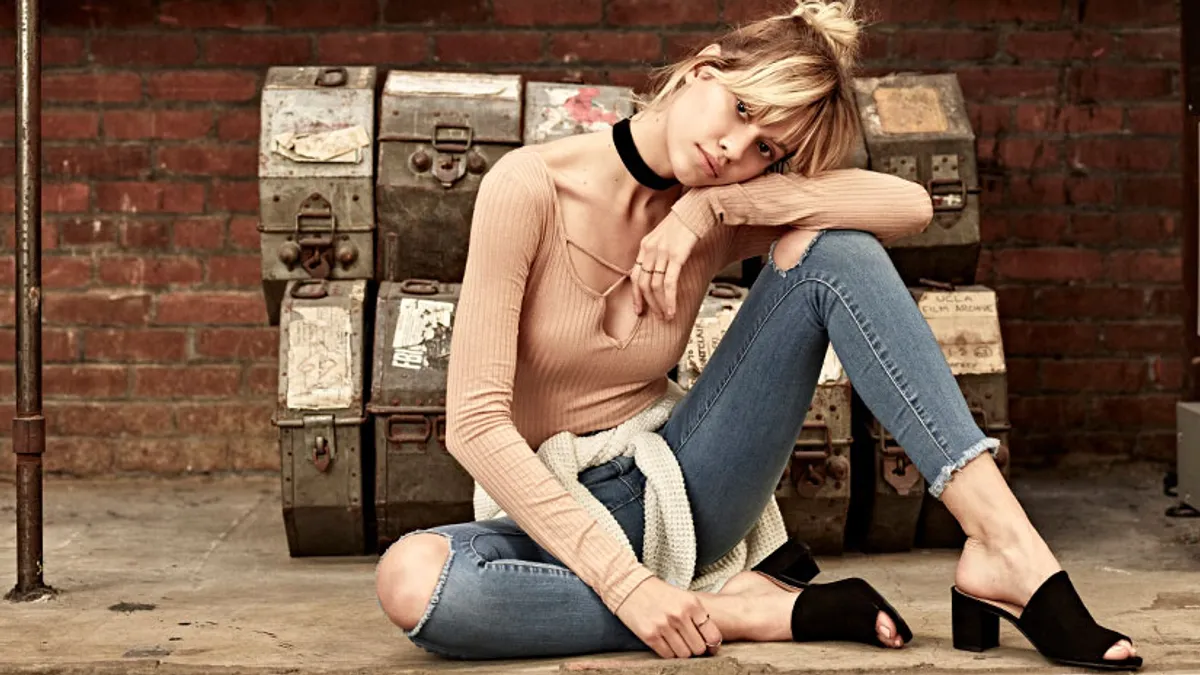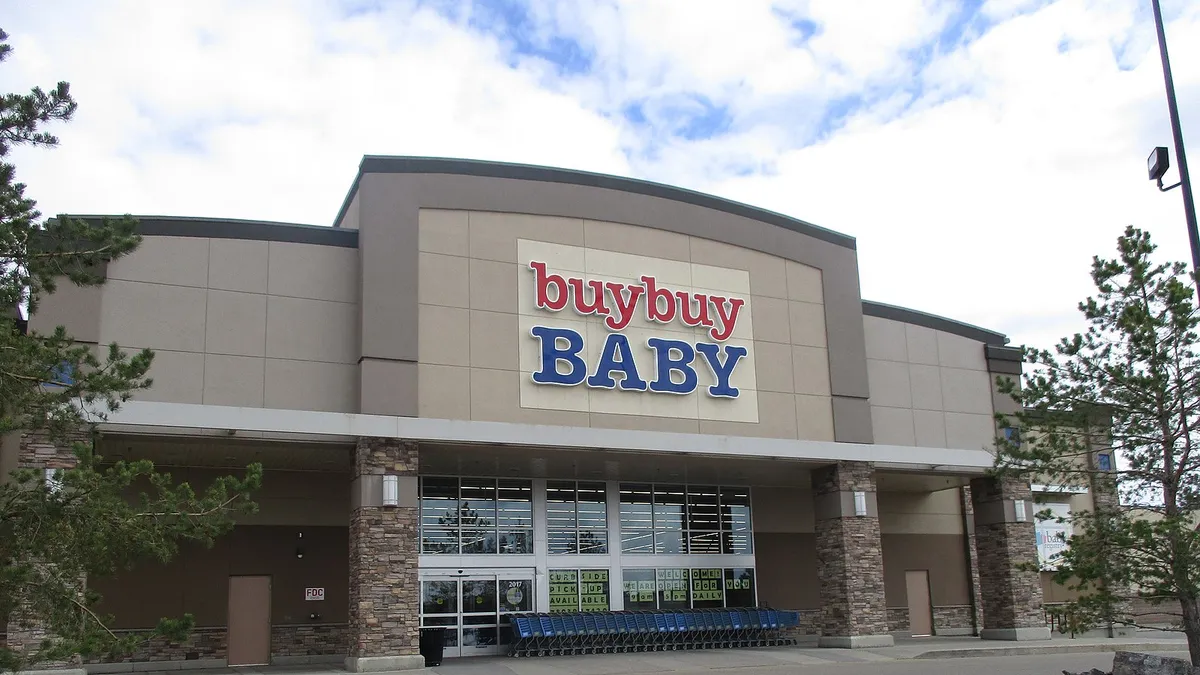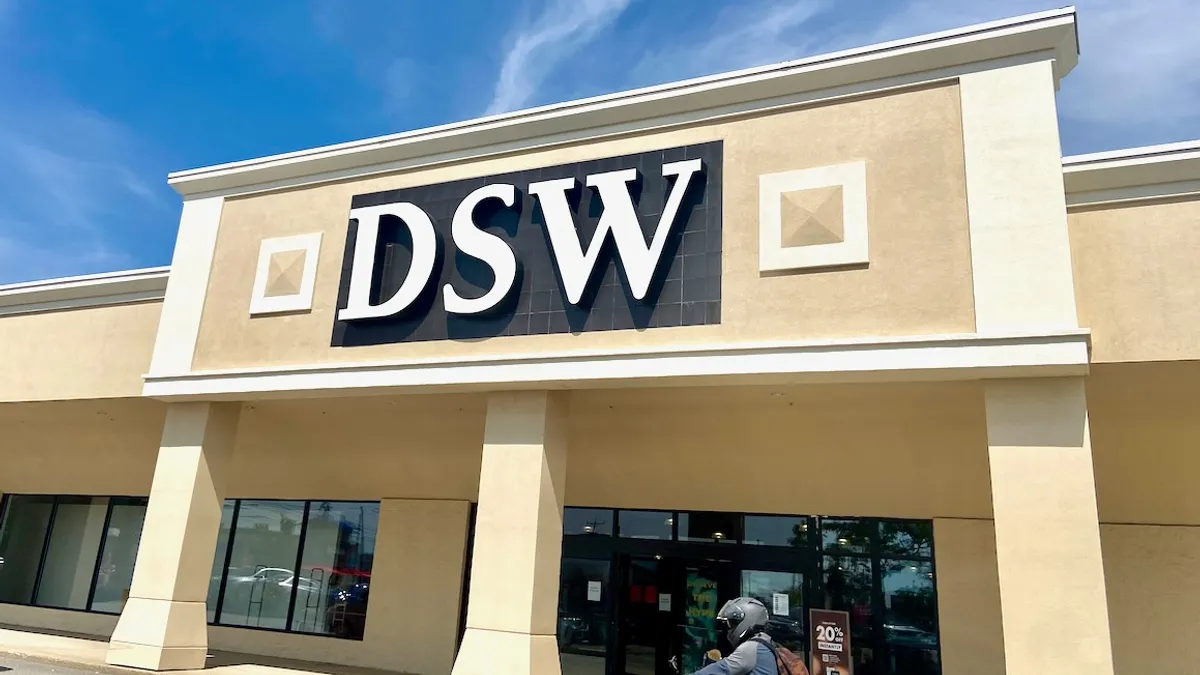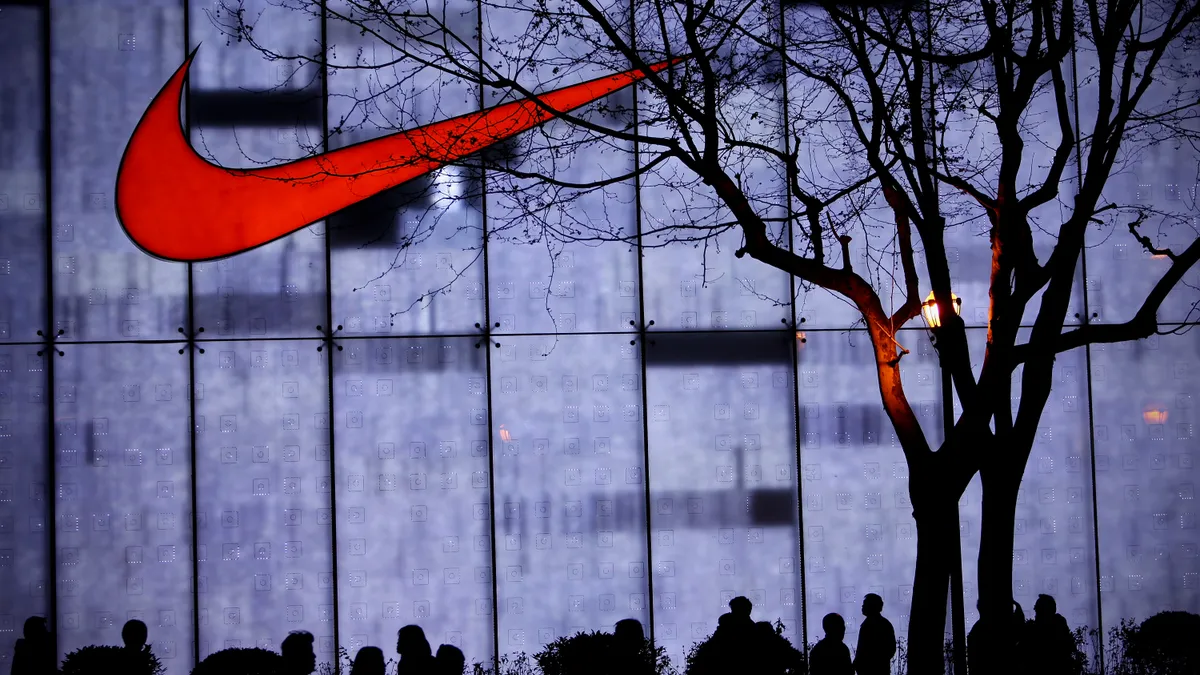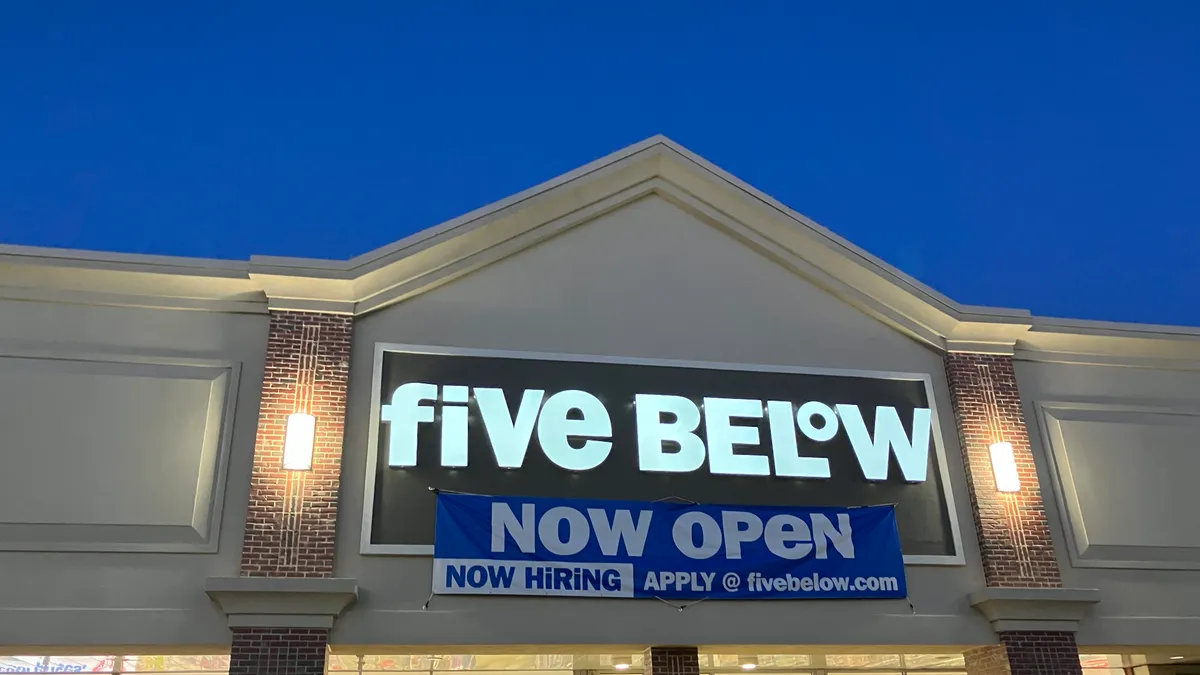Pacific harbor seals spend half their time on land and half in the sea — which pretty much describes the California beach and surfing ethos for humans, too. But Wet Seal, the SoCal-based teen apparel retailer named after these social, curious flippered mammals, finds itself fully underwater these days. Private equity firm Versa, which bought the beleaguered Wet Seal brand in April 2015 for $7.5 million in cash three months after it filed for Chapter 11, is reportedly seeking a buyer and mulling yet another bankruptcy.
Wet Seal has been flopping around on jagged rocks for well over a decade, its fate made slippery by the fickle predilections of its target demographic and the arrival of fast fashion. It wasn't always this way, however. Back in 2002, when Wet Seal was still a public company, shares hit $25 as consumers embraced its laid-back, surf-and-sun aesthetic, but styles inevitably changed, and two years later its stock plummeted to a little over a dollar.
Just ahead of its 2015 Chapter 11 filing — which came after the company lost more than $150 million in a span of two years and defaulted on $27 million in senior convertible notes — Wet Seal abandoned its Arden B brand and closed 338 of its mostly mall-based stores without warning, driving some employees to post angry signs in vacant store windows decrying management’s handling of the situation. In addition to its e-commerce site, its remaining stores now number 171 in 42 states.
Blame Wet Seal's decline on the same problems haunting so many teen apparel brands.
“The history of this business is they have been the most unstable part of retail. If you look at any retail segment and judge them by stability, teen apparel chains have been in the toughest, most volatile part of the retail business,” Howard Davidowitz, chairman of New York City-based retail consulting and investment banking firm Davidowitz & Associates, told Retail Dive. “Department stores don’t go away — they have a bad year, a bad five years, a bad 25, they don’t go, they’re still here. The challenge is focus. Because teen apparel deals with the most fickle customer that’s out there, and right now the most important thing to them is their iPhone and their sneakers."
Stand for nothing, and there's nothing to stand on
If you're looking for a prime example of the capriciousness of youth shoppers, look no further than the logo craze of a few years ago, a trend driven by the likes of Aeropostale, American Eagle Outfitters and Abercrombie & Fitch. Then suddenly, young people uniformly rejected clothing emblazoned with a brand’s name.
“Aeropostale is the king of logos,” Davidowitz said. “Now there’s no Aero because they’re tired of logos.” (In September, Aeropostale was saved from liquidation when a consortium that includes its mall landlords acquired the company out of bankruptcy.)
By contrast, fast fashion retailers like Zara, Forever 21 and H&M have largely escaped the effects of mercurial teen tastes because they quickly produce small batches of trendy styles, rush them into stores, and speedily reproduce their best-sellers. Their supply chain efficiencies and ability to adapt their merchandising mean they’re less likely to build up excess inventory and more likely to have what people want. The resulting cost savings, in tandem with an emphasis on up-to-date trends rather than on quality, protect their margins.
“The whole apparel market is very challenged. It’s overstored and oversaturated,” Shelley E. Kohan, VP of retail consulting at store analytics firm RetailNext, told Retail Dive. “Meanwhile, fast-fashion is trend-right and price-right — they hit it right 80% of the time — while [in the cases of] Wet Seal, Gap and some of these other markets, I don’t know what the call to action is for the consumer. And that’s what you have to have today — something that pulls the shopper into the store.”
There are a few retailers in this space that seem to be emerging with just such a “call to action,” says Jane Hali, CEO of investment research firm Jane Hali & Associates.
“All retailers have to be known for a specialty — age is not enough. Look at Chico’s,” Hali said in an email to Retail Dive. “What is Wet Seal known for? Nothing in particular. What is Abercrombie known for? Hollister is known for a California vibe of shorts, ‘boho,’ etc. American Eagle Outfitters is known for their stretch denim and [lingerie line] Aerie. TJX and Ross have mentioned the increase in their teen selling, especially at back-to-school time, and I believe it — they like the prices and limited assortment. They believe in the value. The off-pricers have taken share in the teen space.”
Who's the villain now?
But the slew of recent casualties in the teen apparel category (a dead pool that also includes American Apparel) are victims of a variety of pressures that extend far beyond fast fashion, Davidowitz says. Nor are the fundamental principles underlying the fast fashion model a guaranteed recipe for success, for that matter: Consider The Limited, which was once a retail powerhouse that itself ran a nimble supply chain teeming with cutting-edge styles, but eventually succumbed to the pressures of the market and filed for bankruptcy earlier this month, felled by e-commerce competition, declining mall traffic and an inability to keep pace with dramatic shifts in shopping habits and fashion sensibilities.
Indeed, The Limited's demise exemplifies just how difficult the apparel space has become, Davidowitz says.
“[The Limited founder and L Brands CEO] Les Wexner — the greatest apparel genius — he quit, he got out of the apparel business,” Davidowitz noted. “He owned Lane Bryant, he owned Limited Express, he owned The Limited, and he quit. The guy is a genius, he invented how to do well in this business and he quit. This is not a quitter, this is a killer. Believe me — I worked for him. The teen apparel space is a business not of the fainthearted. You have to consistently be right. And, yes, there are other problems — e-commerce and fast fashion — but they were going broke before all of that, at the same pace they’re growing broke now.”
Even Mickey Drexler (whom Davidowitz places second after Wexner in the pantheon of retail geniuses) has faced similar trouble turning around J.Crew after “brilliantly” resuscitating Ann Taylor and Gap when he headed those brands (and innovated Gap's lower-price off-brand concept in the form of Old Navy).
Another thing unlikely to help Wet Seal, Davidowitz says, is the burden placed on it by its private equity owners. “Now private equity is there with billions in debt — and goodbye,” he warned. “The first thing they do is borrow billions, and retailers can’t function that way because the business is too volatile and it’s too unpredictable. These poor apparel chains end up one way or another in the hands of private equity — and in the end, there’s no company, no stores, no employees, and the private equity made money. Congratulations. That’s how it works.”
The Limited’s current owner, private equity firm Sun Capital, told investors that despite the retailer's downfall, it nearly doubled its original investment, according to an email to shareholders obtained by Reuters. And if and when Wet Seal again seeks Chapter 11 protection, a turnaround isn't likely to be part of the plan, according to Jasmin Yang, an associate attorney at law firm Snell & Wilmer who has helped several clients in various aspects of bankruptcy and restructuring.
Yang explains that in a typical bankruptcy, a judge considers any debtor protections to be in the service of saving a company as a going concern and protecting jobs, enabling a retailers to wriggle out of leases for underperforming stores a batch at a time rather than renegotiating each lease, with creditors paid pennies on the dollar. But a private equity firm that brings a retailer to a bankruptcy judge so soon after emerging from such protections (informally tagged a “Chapter 22,” for the doubling of “11,” Yang explained) is more likely looking to leverage whatever value remains in the pieces that are left. (A spokesperson for Versa declined to comment for this story, and requests for comment from Retail Dive to Wet Seal weren't immediately returned.)
The hardcore scenario described by Davidowitz often comes about because of the less-than-favorable terms of the debt retailers take on from their private equity benefactors — debt that Yang compares to payday loans.
“It’s similar in that, sure, you can have this money, but it’s going to cost a lot,” Yang told Retail Dive. “For [private equity], it’s about monetizing, and they don’t really care about the continued operation of the business — they don’t have much attachment to it. Wet Seal, The Limited — these are all stores that I shopped at as a teenager at the mall, but they were definitely overstored. They don’t have other options. If they could have gotten a loan under less onerous terms, they would have.”
It’s not that private equity goes in aiming to overburden a retail company: In fact, some retailers do benefit from the time and opportunity that accrue to them when they’re taken private by such firms, Yang says. Still, should Wet Seal find itself in front of a bankruptcy judge in the next few weeks, that will likely signal its end — though Yang believes there’s probably brand equity that could appeal to a larger company as a sub-brand.
“I think there is some goodwill, and I think one of Wet Seal’s most valuable assets would be their trademark, just as with American Apparel — their intellectual property,” she said. “If someone were to buy it and enter into a licensing agreement with a Target or a Wal-Mart, that might be a strategic and creative use. It’s probably not valuable enough to sell to fix all their problems, but licensing is definitely one creative solution. The way teenagers shop is just different now.”



